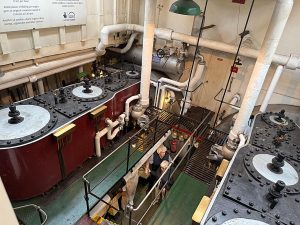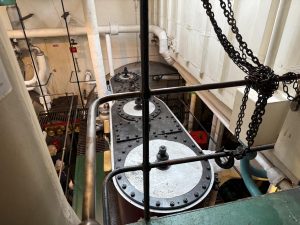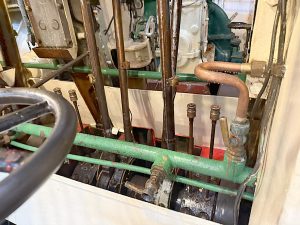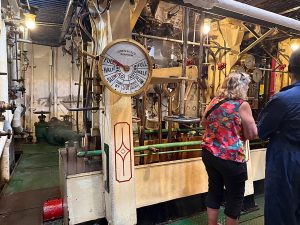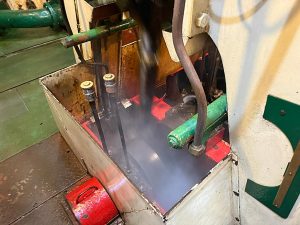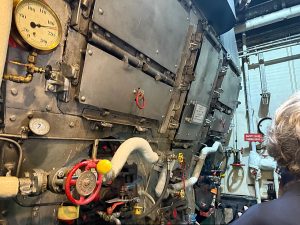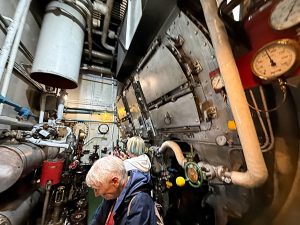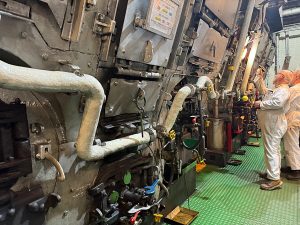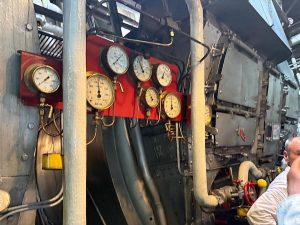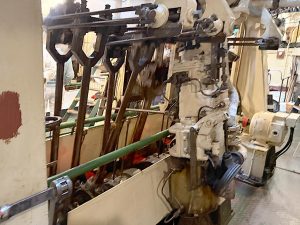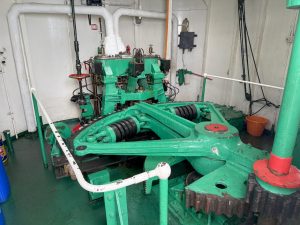26th July: Shieldhall Engine Room
[go to Description of the Shieldhall Trip]
A surprizing feature of S.S. Shieldhall is that you are allowed into the Engine Room and also up on the Bridge. In the Engine Room the pistons and propeller drive shafts are open to view, apparently a feature chosen so that passengers could see the workings of the engines back in her Glasgow sludge ship days.
Information from the Shieldhall website: Shieldhall is powered by two triple expansion engines with cylinder diameters of h.p.15″, i.p. 25″ and l.p. 40″, and the stroke of 30″. Two oil fired Scotch boilers, each 12ft diameter and 12ft long, produce saturated steam to power the main engines, auxiliary engines, all the deck machinery and a 25kW electrical generator (with a diesel generator added to power modern navigational equipment). The normal service speed is 9 knots, although the designed maximum is 13 knots at 120 rpm.
The steering engine is a two cylinder steam engine which alters the rudder angle through a rack and pinion arrangement working on the rudder quadrant. Rudder movements are transmitted from the ship’s wheel on the Bridge by hydraulic pumps which form part of the wheel assembly. Control of the steam input is via a control ram working on a closed loop feedback which adjusts the steam inlet valves accordingly. There is an emergency steering position on the Boat Deck with a small wheel, used if the link to the Bridge is broken, and a large wheel if the ship has to be steered manually.
The machinery on board is very similar, on a smaller scale, to that carried on the ill fated “Titanic”, which makes “Shieldhall” a unique link with the past.
[go to Description of the Shieldhall Trip]

